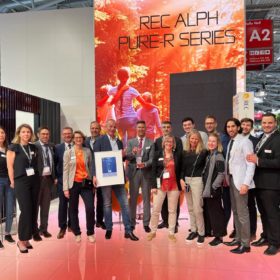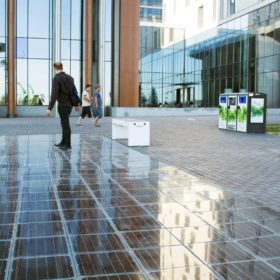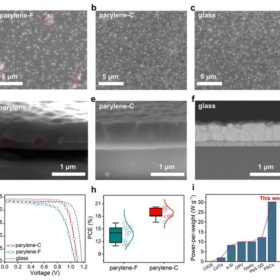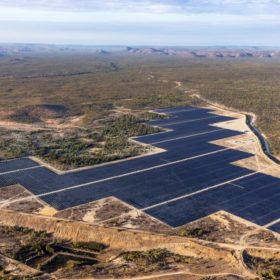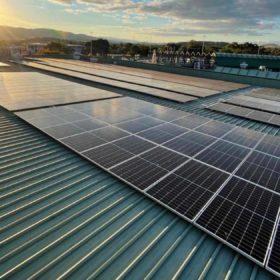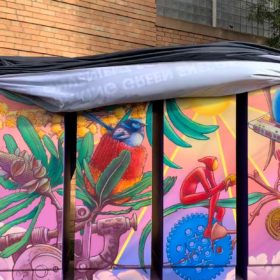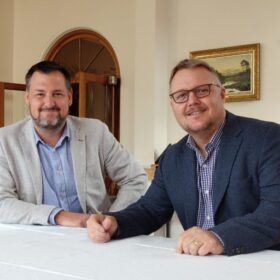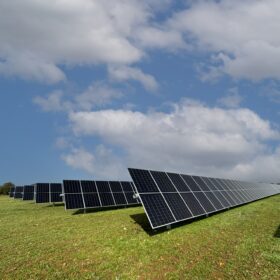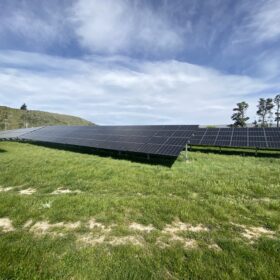Switch to renewables protects ACT from rising energy costs
The Australian Capital Territory’s switch to 100% renewable electricity is providing electricity users in the nation’s capital with protection from skyrocketing energy costs as consumers in other parts of the nation grapple with rising energy bills.
REC: “Our future is in HJT”
While many solar manufacturers are as yet undecided about which PV cell technology they will choose for their next high efficiency expansions, for Singapore-based REC, the future is HJT. pv magazine spoke to Cemil Seber, the managing director at REC Solar EMEA GmbH at the Intersolar Europe 2022 trade show, to dig deeper into these manufacturing plans.
New solar module for pavement applications
Hungarian tech company Platio Solar has developed a new solar PV paving line featuring monocrystalline and polycrystalline cells with clear or opal glass.
Australian miner seals Tesla lithium supply deal
Australian battery minerals company Liontown Resources has completed negotiations to supply electric vehicle and battery maker Tesla with spodumene concentrate from its Kathleen Valley lithium project in the Goldfields region of Western Australia.
Ultra-thin inverted perovskite solar cell with 20.2% efficiency
Chinese scientists have developed an ultralight solar cell with perovskite film based on a 3-µm-thick polymer. It purportedly has a power conversion efficiency in line with that of perovskite cells of conventional thickness.
‘Solar skin’ set to power $40 million Melbourne office tower
With architects and construction companies across the world showing an increasing interest in building integrated PV, one Australian company has outlined plans to clad an eight-storey building being constructed in West Melbourne with a “solar skin” that will generate almost all of the building’s base power.
Queensland solar farms dominate utility scale solar in May
New South Wales has topped the charts for large-scale renewable energy generation in May but Queensland has dominated the solar stakes with the top six utility PV assets for the month all located in the sunshine state.
Supermarket major reaches milestone in rooftop solar rollout
Australian supermarket giant Woolworths has marked a major milestone in its rooftop solar program with a store in the Canberra suburb of Conder becoming the retailer’s 150th outlet to be fitted with solar PV panels.
Victoria boosts battery funding after ‘state first’ storage solution switched on
The Victorian government has announced a multi-million-dollar expansion of its $11 million Neighbourhood Battery Initiative after what is being described as the state’s “first inner-urban” community battery energy storage system was switched on in Melbourne’s northern suburbs.
Brisbane-based green hydrogen company wants to get its projects off the ground with ground-level crowdfunding
Brisbane-based Line Hydrogen is seeking $2 million in crowdfunding investment from Australians who want to contribute to the green energy revolution at the ground level by getting its Tasmanian and Queensland green hydrogen projects off the ground.

